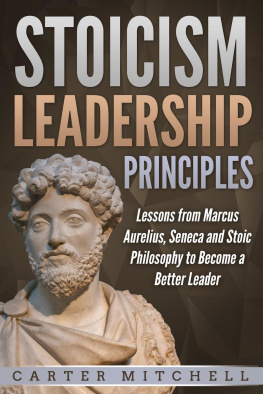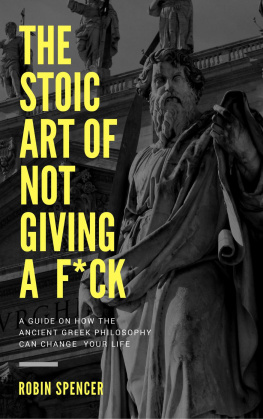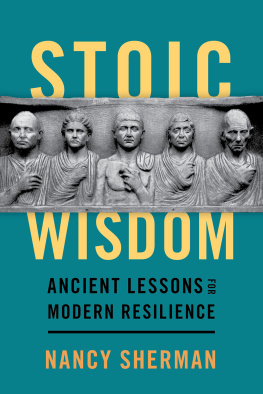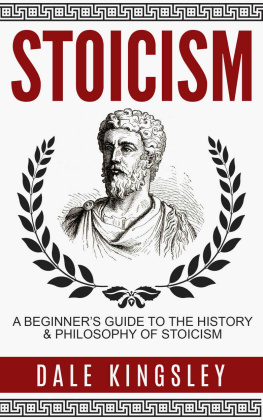Stoicism Leadership Principles
Lessons from Marcus Aurelius, Seneca and Stoic Philosophy to Become a Better Leader
By Carter Mitchell
Copyright 2019 - All rights reserved.
The content contained within this book may not be reproduced, duplicated or transmitted without direct written permission from the author or the publisher.
Under no circumstances will any blame or legal responsibility be held against the publisher, or author, for any damages, reparation, or monetary loss due to the information contained within this book, either directly or indirectly.
Legal Notice:
This book is copyright protected. It is only for personal use. You cannot amend, distribute, sell, use, quote or paraphrase any part, or the content within this book, without the consent of the author or publisher.
Disclaimer Notice:
Please note the information contained within this document is for educational and entertainment purposes only. All effort has been executed to present accurate, up to date, reliable, and complete information. No warranties of any kind are declared or implied. Readers acknowledge that the author is not engaging in the rendering of legal, financial, medical or professional advice. The content within this book has been derived from various sources. Please consult a licensed professional before attempting any techniques outlined in this book.
By reading this document, the reader agrees that under no circumstances is the author responsible for any losses, direct or indirect, that are incurred as a result of the use of information contained within this document, including, but not limited to, errors, omissions, or inaccuracies.
Table of Contents
E veryone seeks to learn lessons from the past. After all, the best way to get ahead in life is to simply learn what others figured out eons ago and avoid the mistakes they made. This way, one can stand on the shoulders of giants, so to speak. Those who seek lessons from history often stumble upon the philosophy of Stoicism.
The dictionary defines a Stoic as someone who can endure pain and hardship without complaint. The word itself has a solid quality to it, and many of us use it in common language without fully appreciating the meaning of the word. Far from being a philosophy, Stoicism is a way of life.
Is it the best way of living life? Well, this is up for debate, and I will not be so arrogant as to claim that this is the solution to all the problems in the world. However, adopting a Stoic viewpoint of things does help view them with better perspective. Ultimately, it all comes down to what we think were doing on this rock floating through space.
Often, it is extremely easy to get carried away with the ins and outs of our daily routines and we forget that there are things larger than ourselves. Were not alone in recognizing such realities. At some point, every single human society has pondered over its place in the overall scheme of things and has designed a field of philosophy to help answer some of lifes most pressing questions.
The most important and pressing question is often: what is the purpose of my life? The answer to that question is often the defining characteristic of various schools of thought.
P hilosophy often turns into incomprehensible text, much like the headline of this section, which I must apologize for. Im merely trying to make a point. It is easy to twist yourself thinking about the nature of human existence and miss many fundamental aspects of it. One can try to completely deny the negative aspects of it, one can try to sneer at life and its happenings, one can be equanimous to it, and so on.
There is no shortage of philosophies when it comes to figuring out how to live your life. No matter which philosophy you adopt, the ultimate criterion is whether it fits you well or not. This is where Stoicism fares well.
On the surface, Stoicism has an extremely negative look on the grand scheme of things. Despair and resignation blight it. Indeed, one of the men whose names graces the subtitle of this book, Seneca, was almost comically luckless throughout his life and spent his days like a leaf being battered in the high winds between one tyrant and another.
While Seneca spent most of his time ensuring his head was still attached to the rest of him, Marcus Aurelius suffered no such problems. The catch was that Marcus Aurelius suffered problems of a magnitude Seneca would have wished he had. After all, it was no easy task being the Roman emperor in charge of repairing a kingdom while dealing with an incompetent son who was busy eyeing his sister the whole time (if the movie Gladiator is to be believed).
Jokes apart, both men faced extremely different circumstances in class, life conditions, and situations, and yet turned to the same philosophy to receive answers. In addition to these two, we also have the stirring entry of Epictetus, born a slave and died a largely anonymous philosopher who is only popular these days thanks to the efforts of his student, Arrian, who took notes in class.
These three are a peculiar bunch: an opportunistic politician, an emperor, and a slave. The only thing common in their worlds was that something was always going wrong with it, which can be said of all of our lives. All three of them figured out that it wasnt the chase after good times that determines the quality of our lives, but the method of handling the bad times that contains the key to peace.
A ll ancient schools of philosophy were concerned with the aim of life and how to go about living it well. Almost all of them agreed that virtue was something worthy to aim for. Almost all of them equally disagreed on how to go about achieving this. This is an interesting contrast to ancient Eastern philosophy, which talks about the same things in very different languages. Perhaps they just didnt like arguing as much in the East, who knows?
Either way, theres no dearth of opinion on how to live a good life. Neither is there any lack of material on what constitutes good leadership. Modern principles of leadership are numerous, but theres something about ancient wisdom that keeps drawing us back to it. Perhaps the fact that these principles have stood the test of time has something to do with it.
Next page













